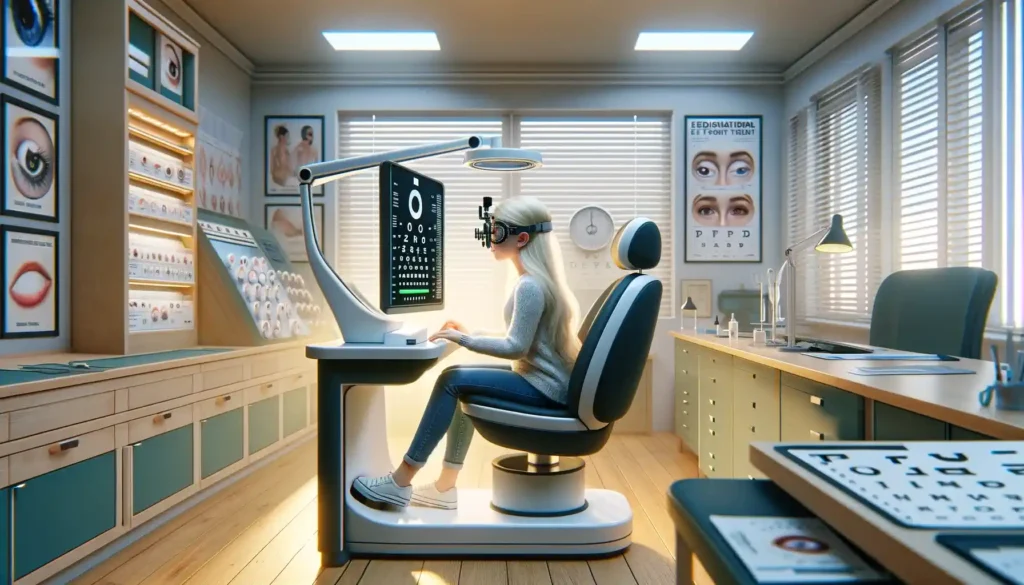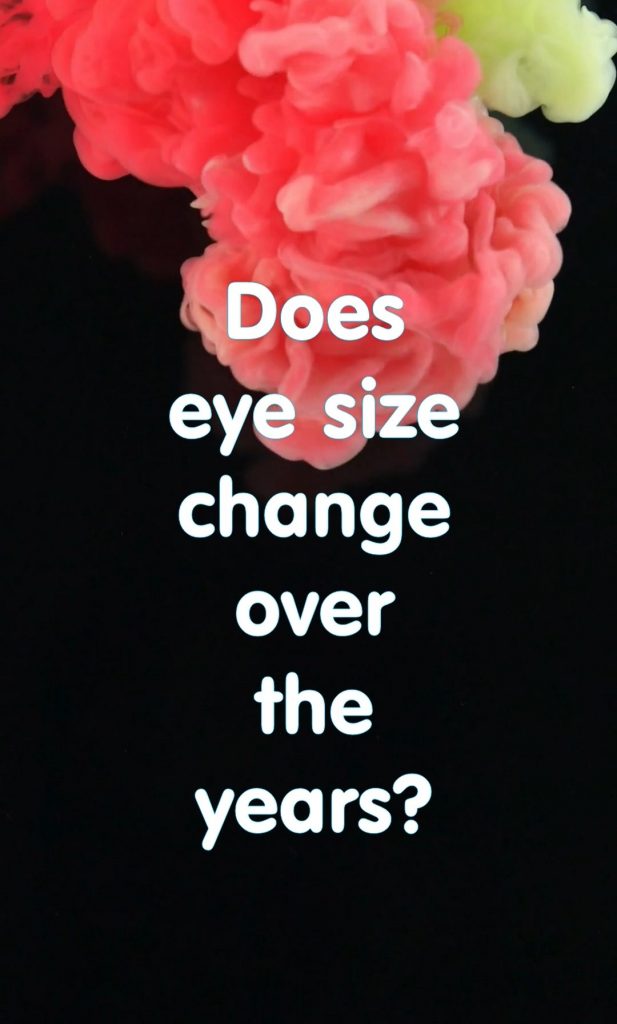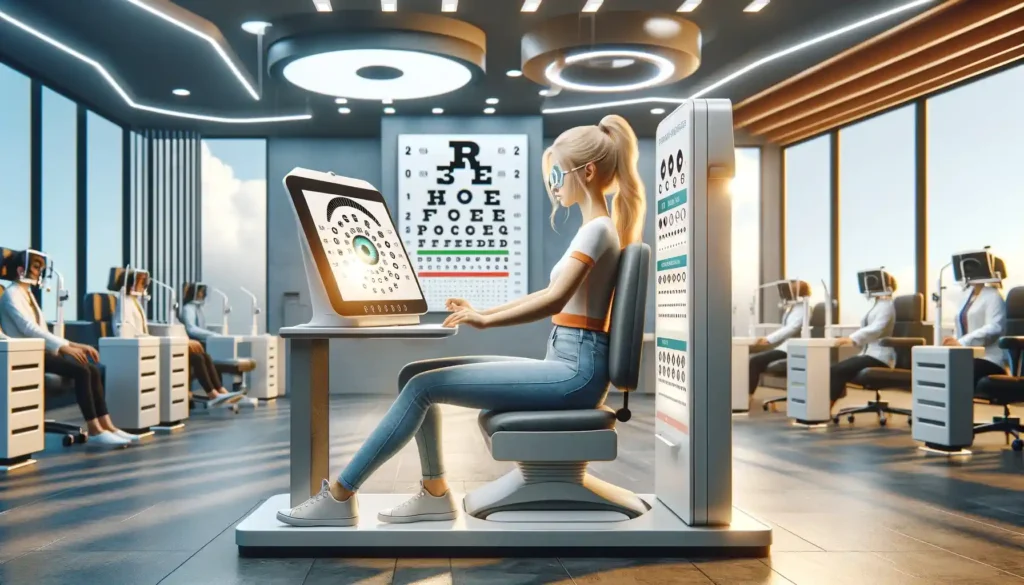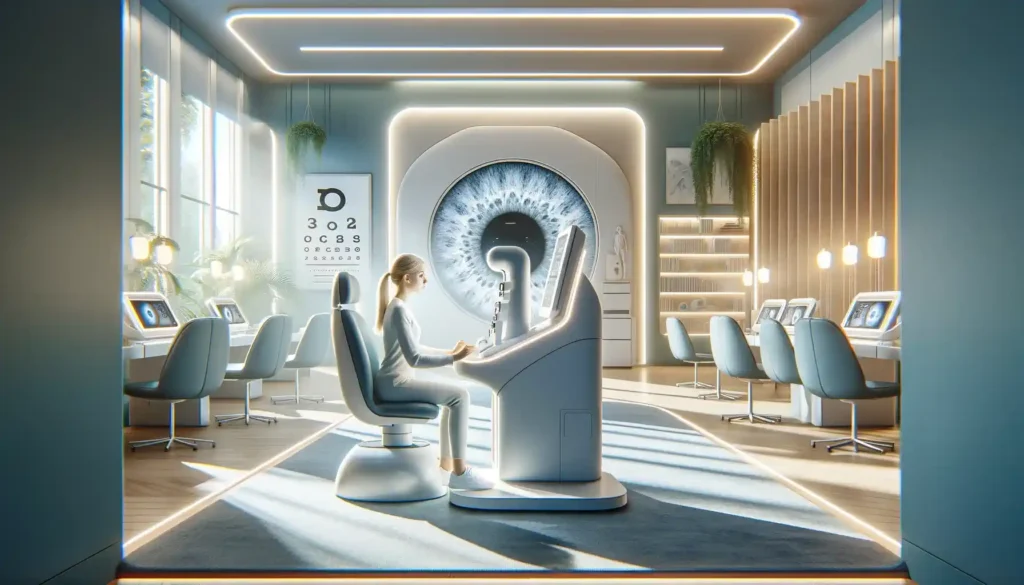Can Eye size over the years? The human eye is an organ that plays a vital role in our perception of the world. But have you ever wondered if the size of our eyes can change over time? In this blog post, we will explore the question of whether eye size can vary throughout a person’s life.

Eye Anatomy essentials
It’s essential to understand the basic anatomy of the eye. The human eye consists of several components, including the cornea, iris, lens, and retina. The cornea and lens help focus light onto the retina, which is responsible for converting light into electrical signals that the brain interprets as visual information.
Can Eye size over the years

From birth, We grow, our limbs, our nose, and our ears grow,
but our eyes remain the same size. And our eyes always remain the
same – 2.5 centimeters or 1 inch in diameter and 8 grams in weight.
Moreover, only 1/6 of the eye is visible.
Some changes such as thinning of the eyelids and reduced elasticity, can give the impression of changes in eye shape. But The size remains the same.
Can eye health and eyesight be improved naturally with eye Training courses?

Are you tired of straining your eyes, dealing with blurred vision, or feeling the effects of digital eye strain? It’s time to take control of your eye health and unlock the potential for clearer, sharper vision. Introducing the Eyesight Academy Eye Training Course, designed to enhance your visual acuity, strengthen your eye muscles, and improve overall eye health. Join us on this transformative journey and rediscover the beauty of the world through your revitalized eyes!
Can Eye Size Change Over the Years?
The eyes are remarkable organs, allowing us to perceive the world in all its beauty and detail. They play a crucial role in our daily lives, but have you ever wondered if their size can change over the years? While it’s a common belief that the eyes don’t change significantly in size after childhood, there are some nuances to consider.
Eye Anatomy and Development
Before delving into the question of whether eye size can change, it’s important to understand the basic anatomy and development of the eye. The human eye has a nearly spherical shape, with a diameter typically ranging from about 23 to 24 millimeters. This size is largely determined during childhood and adolescence when the eyes are still growing.
Changes During Childhood and Adolescence
The most significant changes in eye size occur during childhood and adolescence. As a child grows, the eyes also undergo growth and development. The eye’s lengthening process helps to focus light correctly on the retina, enabling clear vision. This growth phase typically continues until the late teens or early twenties when most people reach their adult eye size.
Age-Related Changes
While the eyes generally stop growing in size once adulthood is reached, other age-related changes can affect eye size perception. These changes may not involve a physical increase in eye size but can contribute to the perception of changes:
- Receding Eyeball: The eyeball’s position within the eye socket can change slightly, potentially creating the impression of smaller eyes.
- Eyelid Sagging: Eyelid sagging or drooping (known as ptosis) can make the eyes appear smaller.
- Presbyopia: Vision can change, presbyopia, can make it difficult to focus on close-up objects, affecting the way we perceive eye size in relation to reading glasses or corrective lenses.
Disease and Medical Conditions
Certain medical conditions can cause changes in eye size or the appearance of changes over time. For instance, conditions like glaucoma, where there is increased pressure within the eye, can lead to enlargement of the eye. Additionally, some rare genetic disorders may result in abnormal eye growth.
Eyeballs change Conclusion
In general, once a person reaches adulthood, significant changes in eye size are unlikely. The eyes reach their adult size during childhood and adolescence. However, lifestyle-related factors, such as eyelid sagging and presbyopia, can affect the perception of eye size. Eye Exercises are essential to monitor eye health and address any concerns related to eye size or vision changes.

